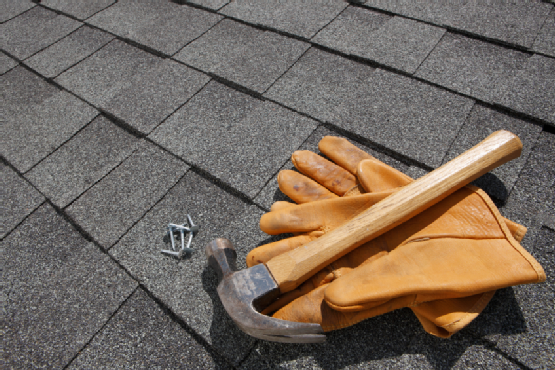
A roof is a vital part of your home. Like other aspects of your house, it will need regular roofing maintenance and inspection for issues to stay in good shape and keep the leaks out. The amount of maintenance required, and the lifespan of your roof will depend on the materials you use and the weather your house is exposed to.
Basic Roofing Inspections
What to Look For:
The best way to determine if repairs or maintenance are needed is to conduct an inspection of your roof. Inspections are recommended about twice a year. Examine your roof once before the cold/wet season, and once at the end of winter. Check for signs of aging. Cold weather can cause curling along the edges. Brittle shingles may show surface cracks, and bubbles can indicate ventilation issues.
Walk around your house and inspect the roof from the top, sides, inside and out. Check the attic and make sure it is insulated properly and that there are no leaks. Attic insulation can increase the lifespan of your roof and protect it from the elements. Check your gutters and downspouts. Make sure the areas are working properly and aren't clogged. Proper water drainage is especially important with areas that experience heavy or frequent rain.
Professional Opinions:
If you detect signs of major moisture issues, it's best not to rush and tear apart your roof to find a leak. Instead, try getting a professional moisture survey. There are three primary kinds of moisture detection:
- Infrared Scans - These scans can detect how much heat is being retained or lost. Think of it like a 'soggy insulation' detector.
- Nuclear Isotopic Meters - While this sounds like some sort of scary radiation scanner, it's really a device that detects Hydrogen atoms. Since water is H2O chemically, the more H's detected, the more water is present.
- Electrical Capacity/Resistance - Water is highly conductive, so the better your roof conducts - the more water is present.
Professionals can detect widespread problems and propose the best solution for you. If our regular maintenance is not enough, a whole house solution can be developed to keep you dry.
Roofing Materials
Here are some of the common types of roofing material and their general maintenance concerns:
- Asphalt Shingles - The most commonly used type of roofing for American homes, these shingles have varying lifespans based on the kind purchased but are easy to install and patch.
- Wood Shingle or Shake - Beautiful and classic, this wooden roofing can be high maintenance. Frequent cracks and rotting from moisture require regular inspections and maintenance.
- Clay & Concrete Tiles - Usually offering a lifespan of 50 years, these tiles are highly durable and energy efficient. Due to the extra weight involved, proper installation is a must to prevent issues down the road.
- Metal Roofing - Metals are available in new and recycled options, in materials including copper, aluminum, and steel. Lightweight and highly durable, these roofs are very resistant to adverse weather. Look for dents and dings that may require cosmetic repairs.
For more information on roofing maintenance and installation, consult your local expert.
